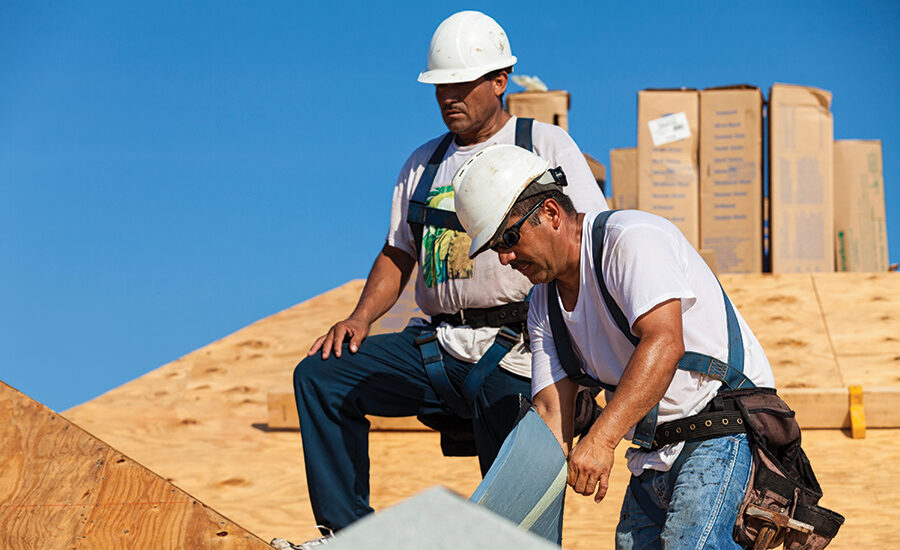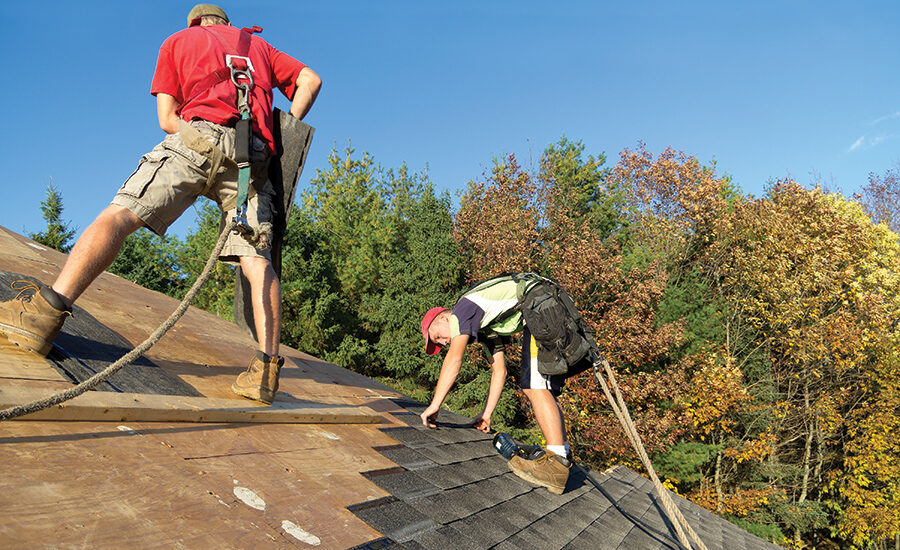Building Business with Safety
Roofing contractors can make a much greater contribution to long-term rooftop safety.






Over the past few years, I’ve read a number of articles in roofing magazines discussing the different ways we can make roofs safer – both during and after roof installation. Unfortunately, some of these articles also tend to imply that adding these important safety features is primarily the responsibility of the building designer or architect, who may never even set foot on a roof. Now, don’t get me wrong, I’m all for making sure building designers are up to speed on the latest rooftop safety systems, but I think roofing contractors can make a much greater contribution to long-term rooftop safety – and increase sales in the process.
First, think about the number of roofing quotations you provide directly to building owners. If your company is submitting dozens of quotes every week, you should consider adding a wide variety of permanent rooftop safety solutions as options to your quote. Here’s a few ideas to get you started.
Start with a Safe Roof Hatch
Based on more than 30 years of walking on roofs across the country, I’m always surprised by how many have no interior means of access. Very frankly, interior roof hatches are much safer than temporary exterior ladders, especially for anyone who’s not in the roofing business full-time. And if you decide to quote adding a roof hatch, consider offering a hands-free hatch that reduces the potential for falls or other injuries whenever the hatch is opened or closed. Also consider quoting an inclined ladder or ship’s ladder to access the hatch versus the all-to-common unprotected straight ladder.
Add Safety Walkways
Properly designed and installed roof walkways not only reduce the potential for falls and other accidents, but they also can significantly reduce traffic damage to the roof surface. I think it’s best to use walkways with a contrasting color to the roof surface. Good old “safety yellow” is one of the best bets, either for the entire walkway surface or as a border along both sides of the walkway. As an added selling bonus, many building owners are accustomed to yellow walkways in the interior of the building, and adding yellow walkways to your quote may be well received.
As an extra feature of your walkway quote, consider adding crossovers over interior parapets and stairs at roof height changes. Also add ramped and elevated walkways at other roof surface obstructions such as conduit and piping runs.
Don’t Forget to Protect Skylights
Skylights always pose a risk for falls, and there are many ways to reduce this risk. For some skylights, you can add a typical six-inch by six-inch metal grid into the structural framing of the skylight opening. Of course, the grid must be carefully engineered to support twice the maximum intended load in order to provide fall protection, both before and after a skylight is installed. For large skylights or where installing an interior grid is not feasible, consider exterior metal grates or a guardrail system.
Brochures, Samples and Drawings
If someone in the office has CAD experience, it shouldn’t take long to print out a detailed roof plan illustrating all of your proposed safety features. And it’s usually very easy to obtain brochures and samples that can help reinforce the benefits of your safety suggestions to the owner.
One additional way to make your rooftop safety quote more real for the owner is to install these features on your own roof. A good safety hatch with an easy-to-climb interior stairway makes it easy to personally show your customers what a high-quality, safe roof looks like. And a well laid out walkway system makes it easy to show your customers many more roof accessories beyond safety devices – such as solar tubes, solar PV and thermal systems, and many other important rooftop accessories.
Start Today
Finally, one of the best ways to get started on building your rooftop safety business begins right here in the May, 2016 issue of Roofing Contractor. This month, a wide variety of roof safety equipment and solutions are highlighted, and I hope you’ll take some time to review these new products and decide how they can help you grow your roofing business.
Looking for a reprint of this article?
From high-res PDFs to custom plaques, order your copy today!





.jpg?height=200&t=1715778122&width=200)


